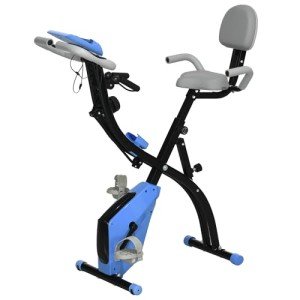Five Qualities That People Search For In Every Bicycle For Workout

The Benefits and Mechanics of Using a Bicycle for Workout
Cycling, a versatile and reliable type of exercise, has actually been getting popularity as a low-impact, high-reward activity. Whether you're an experienced athlete or a newbie aiming to improve your fitness, riding a bicycle can provide a large range of health benefits. This post digs into the mechanics of cycling as a workout, its physical and mental benefits, and supplies ideas for beginning.
Introduction to Cycling as a Workout
Cycling is a low-impact, full-body exercise that can be adapted to different fitness levels and objectives. It mostly targets the lower body, but it likewise engages the core and upper body, making it a comprehensive workout. Whether you're cycling outdoors on a road bike or inside on a stationary bicycle, the benefits are many.
Physical Benefits of Cycling
Cardiovascular Health
- Cycling is an excellent cardiovascular exercise that helps improve heart health. It increases heart rate, boosts lung capacity, and improves flow, lowering the threat of heart disease, stroke, and high blood pressure.
Muscle Strengthening
- Cycling mainly works the quadriceps, hamstrings, calves, and glutes. It also engages the core muscles for stability and the upper body for balance and steering. Regular cycling can cause more powerful, more toned muscles.
Weight Management
- Cycling is a high-calorie-burning activity. Depending upon the strength and duration, a 150-pound person can burn around 500-800 calories per hour. This makes it an efficient tool for weight-loss and weight management.
Joint Health
- Unlike high-impact workouts like running, cycling is mild on the joints. It provides a low-impact way to stay active, making it suitable for individuals with joint discomfort or injuries.
Improved Balance and Coordination
- Cycling requires balance and coordination, which can enhance in time. This can be especially advantageous for older grownups or those recovering from injuries.
Mental Benefits of Cycling
Stress Reduction
- Cycling can be a meditative and peaceful activity. The balanced movement and the outdoors can help lower tension and stress and anxiety, promoting psychological wellness.
Psychological Clarity
- Exercise, consisting of cycling, releases endorphins, which are natural mood lifters. This can improve psychological clearness and cognitive function.
Increase in Confidence
- Attaining fitness objectives, whether it's completing a long trip or enhancing speed, can enhance self-esteem and self-confidence.
Kinds of Bicycles for Workouts
Road Bicycles
- Created for speed and performance on paved roads, road bikes are lightweight and have thin, smooth tires. They are ideal for long-distance trips and improving cardiovascular fitness.
Mountain Bicycles
- Developed for off-road terrain, mtb have wider, knobby tires and a durable frame. They are outstanding for developing strength and endurance, especially in hilly or rough surface.
Hybrid Bicycles
- Integrating components of road and mtb, hybrid bikes use adaptability. They appropriate for both paved and unpaved surfaces and are great for general fitness and commuting.
Stationary Bicycles
- Perfect for indoor workouts, stationary bicycles can be adjusted for resistance and strength. They are convenient for all weather conditions and can be utilized for interval training and high-intensity workouts.
Tips for Getting Started
Select the Right Bike
- Select a bike that fits your fitness objectives and comfort level. Think about elements like surface, distance, and budget.
Invest in Safety Gear
- Constantly wear a helmet, and consider other safety gear like gloves, knee pads, and reflective clothes, specifically if you're cycling outdoors.
Start Slow
- If you're new to cycling, start with short, easy rides and slowly increase the duration and strength. Exersise Bike assists prevent injuries and develop endurance.
Stay Hydrated and Fueled
- Drink a lot of water previously, throughout, and after your trips. Eat a well balanced diet to sustain your workouts and help recovery.
Join a Community
- Think about signing up with a cycling club or group to stay determined and meet similar individuals. This can also supply chances for group rides and training.
FAQs
Q: Is cycling a good workout for beginners?
- Yes, cycling is an outstanding workout for newbies. It is low-impact, easy to find out, and can be adjusted to various fitness levels. Start with brief, simple trips and gradually increase the strength and duration.
Q: How typically should I cycle for fitness?
- Go for at least 150 minutes of moderate-intensity cycling per week, or 75 minutes of vigorous-intensity cycling. This can be broken down into shorter, more regular sessions, such as 30 minutes, five times a week.
Q: Can cycling aid with weight loss?
- Yes, cycling is a high-calorie-burning activity that can aid with weight loss and weight management. Integrate it with a healthy diet for best results.
Q: What are the best times to cycle for a workout?
- The very best time to cycle depends on your schedule and choices. Morning trips can help start your metabolic process and boost energy levels, while night rides can be an excellent way to loosen up after a long day.
Q: Do I need special clothes for cycling?
- While you do not require unique clothes, comfy, breathable equipment is advised. Consider cycling shorts for comfort and a moisture-wicking top to remain dry. If you're cycling outdoors, reflective clothing can improve visibility.
Cycling is a flexible and rewarding type of exercise that uses numerous physical and psychological advantages. Whether you're cycling outdoors or indoors, it can be tailored to your fitness objectives and preferences. By choosing the right bike, investing in security gear, and following some fundamental pointers, you can delight in a satisfying and reliable workout. So, hop on a bike and start pedaling your way to better health and well-being.

